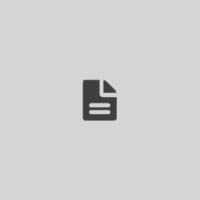Gehört zu: Computer Software: Audio
Siehe auch: iTunes
After the first year of test usage, what functions of iTunes Match make sense for me?
iTunes Match: The First Year
Since one year I now have my iTunes match subscription (without automatic prologation).
My onriginal and primary intent was to “legalize” my somewhat grown collection of single MP3 songs.
I also wanted to try iTunes match and gather experience, which functionality might be useful for me for the next years (switching from “Test Mode” to “Production Mode”).
iTunes Match: Experience with Functionality
- Legalize old MP3 Collections: Works good
- Purchase some “missing” songs for my collection: Yes I did this a few times (iTunes Store)
- “Upgrade” MP3 songs from my CD collection to AAC digital quality: works good
- “Upgrade” MP3 songs from Vinyl records to digital quality: did work only for a very few number of songs
- Backup: Apples iCloud as a safe backup for my songs (5000 songs, 25 GB): This is a very valuable function, since it’s a near real time remote backup i.e. in Apple’s “iCloud” (precondition: you must use iTunes as your song library!)
- Remote access to iCloud: see below
iTunes: Access to Songs in iCloud
Remote Access: When I’m away from home, I have easily access to my songs with Apple mobile devices like iPhone and iPad.
For my mobile notebook computer (Windows 7) I decided not to make a local copy of all of my song files (5000 songs, 25 GB), but to try a connection via the internet to my iCloud. This was not so easy. The documentation for this sceario is difficult and sometimes wrong. Apple repeatedly ignores Windows Notebooks when talking about “mobile devides” – focussing on iPhone and iPad only….
What worked for me is:
- Installing iTunes latest version on my mobile Windows 7 notebook.
- Connected iTunes to the Apple Store: This made available my purchased songs (quite a few) but not all the other songs I have in iCoud
- Only after I activated “Turn On iTunes Match” in iTunes (Menue: Store > iTunes Match) I could see all my songs in iTunes on my mobile Windows notebook. iTunes did not ask for an extra subscription of iTUnes Match, but automatically used my exisiting iTunes Match account.
- This is not “Steaming Audio”. the songs from iCloud are effectrively downloaded and replay starts early (AAC and MP3 ?)
iCloud Control Panel for Windows
I also installed iCloud Control Panel 2.1.1 for Windows on my mobile notebook, but am not sure, if this was necessary for the access to the songs in iCloud – since Apple only talks about “Fotostreams”, “Favorites” and “Outlook” – what I realy do not need in the Cloud.
